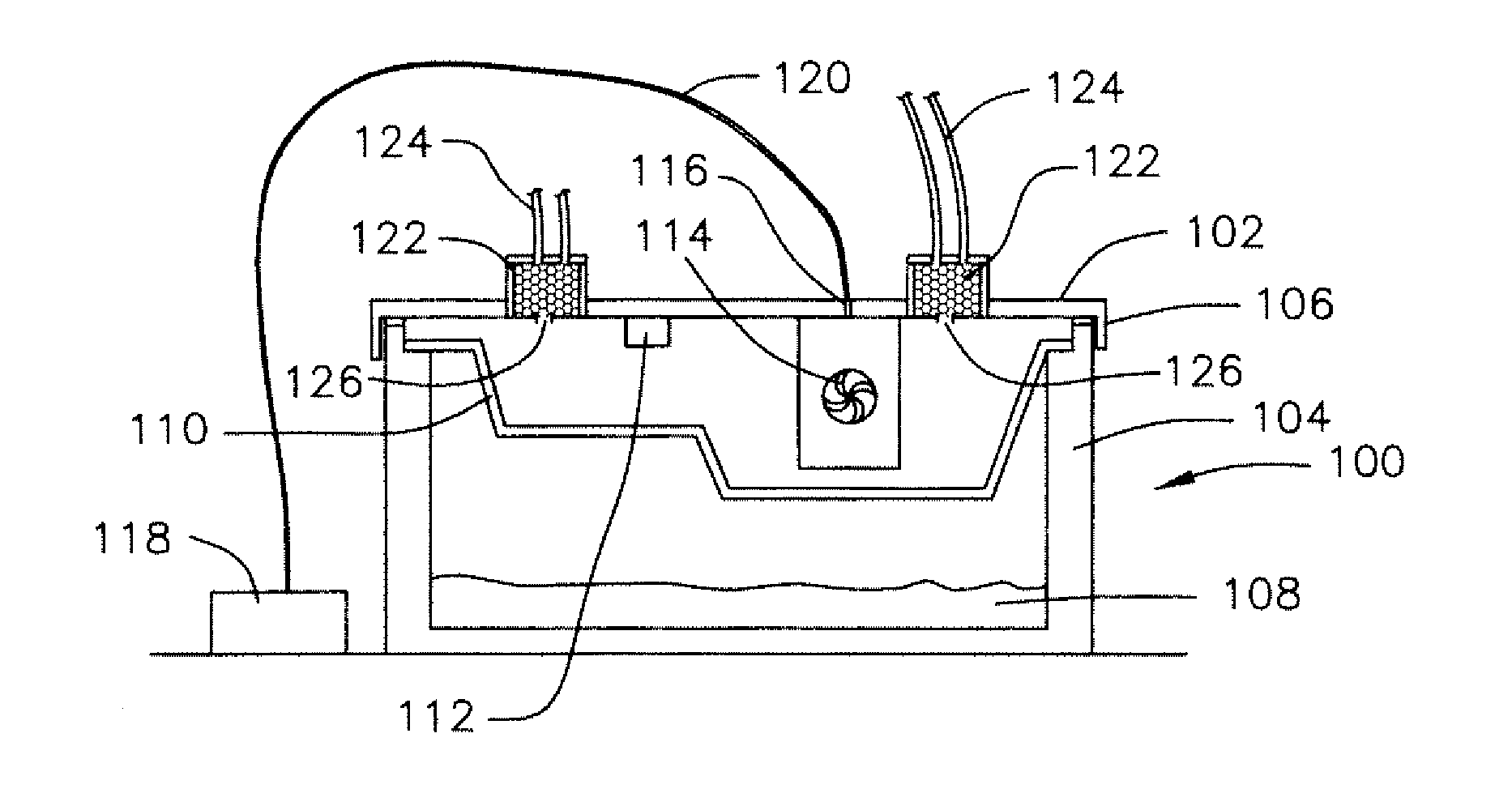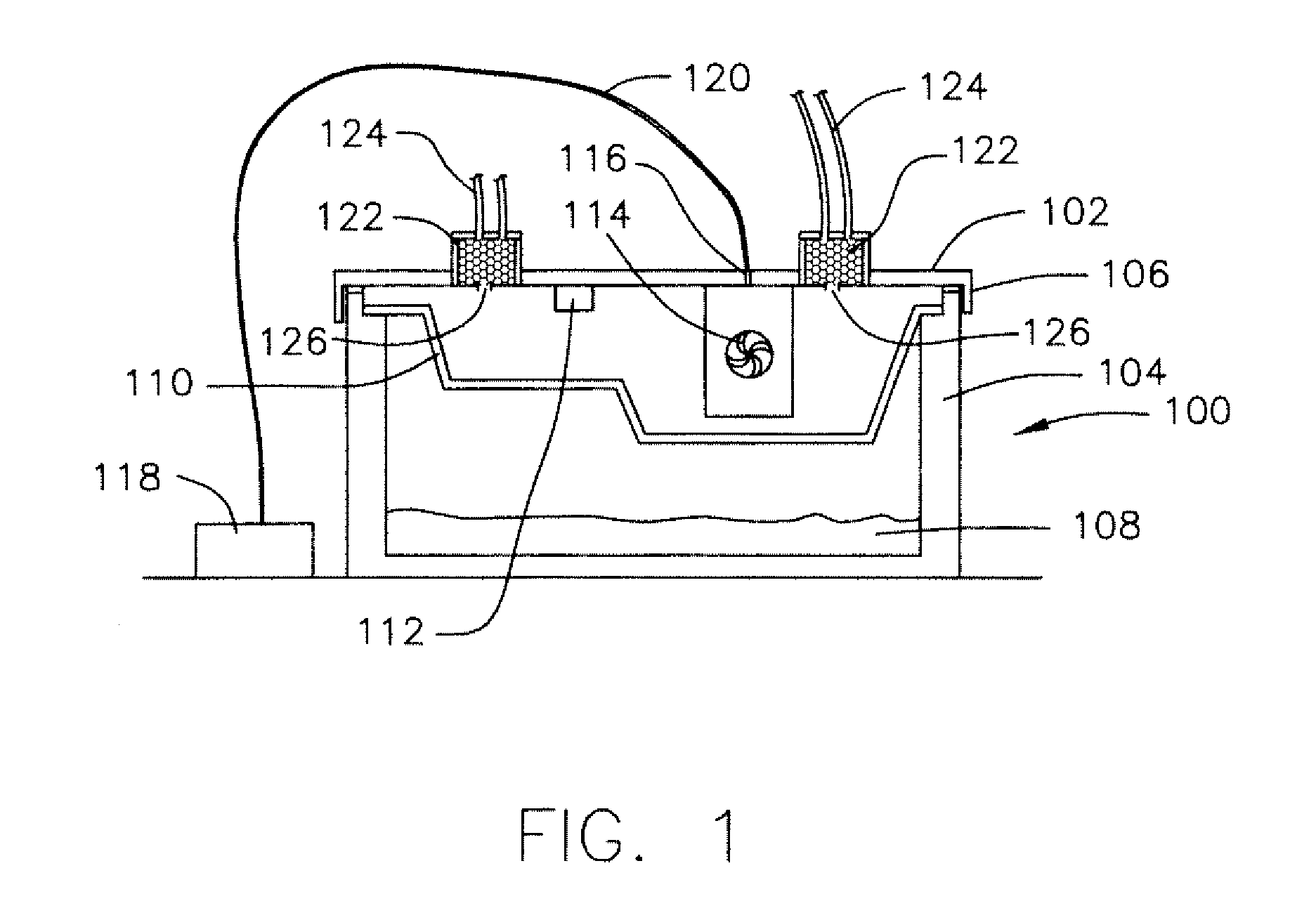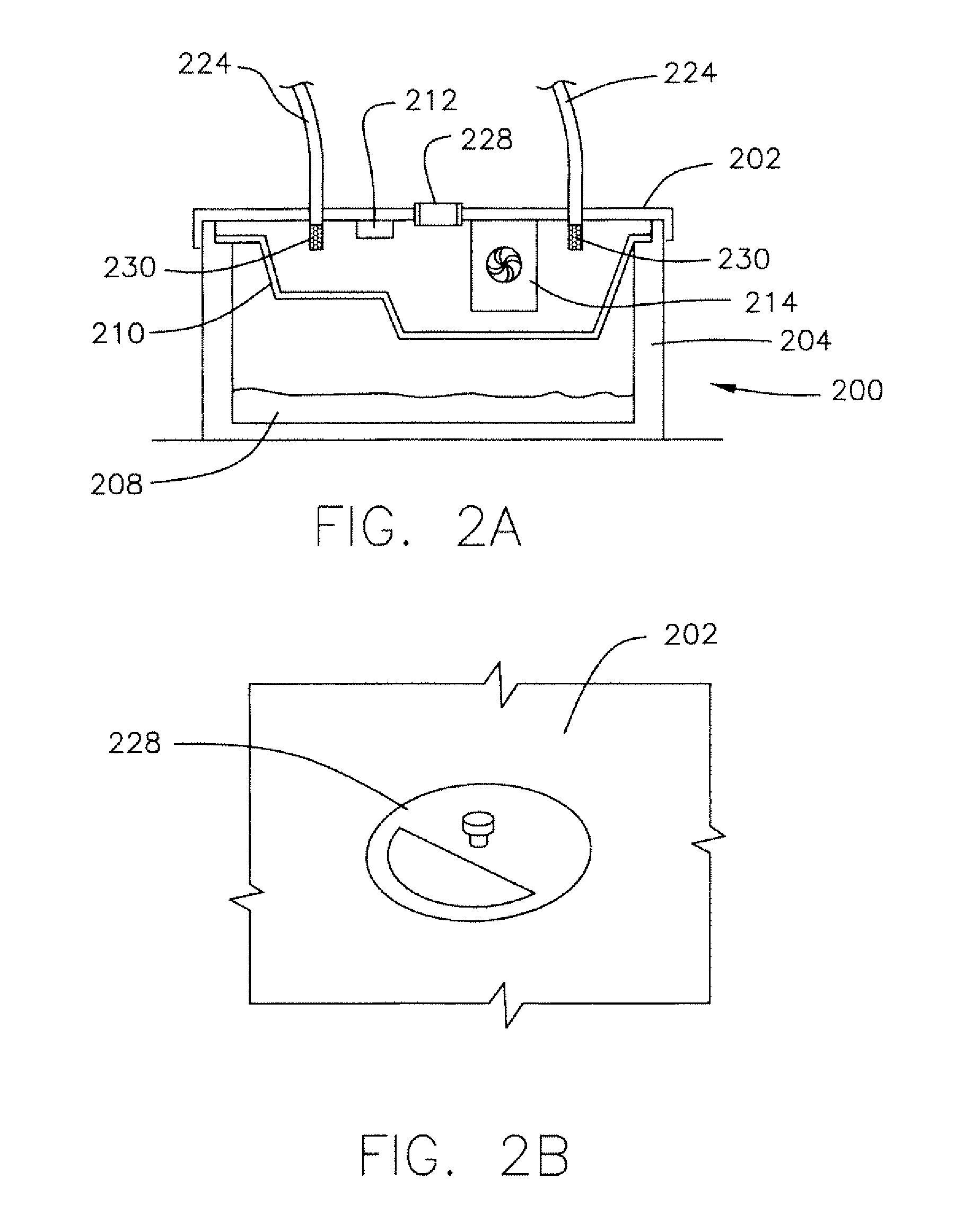Gas delivery system for an animal storage container
a gas delivery system and storage container technology, applied in animal husbandry, other medical devices, medical science, etc., can solve the problems of not performing as well in studies, preventing a person's adequate breathing, and none of the currently available systems providing such effective active mixing, so as to achieve the effect of maximum gas mixing within the container
- Summary
- Abstract
- Description
- Claims
- Application Information
AI Technical Summary
Benefits of technology
Problems solved by technology
Method used
Image
Examples
Embodiment Construction
[0064]This invention will be further understood in view of the following detailed description, and relative to the non-limiting embodiments provided herein, and with reference to the drawings.
[0065]Referring now to FIG. 1, there is depicted a side view of one embodiment (100) of the invention. The animal storage system (100) of FIG. 1 comprises a lid (102) and a container (104). In a preferred embodiment, the lid (102) comprises a lip or edge (106) to keep the lid from sliding off of the container (104). The lid (102) can be made of any suitable material for use with an animal container. Preferred embodiments are made from plastics, such as acrylic. The container (104) can come from any standard, unmodified animal storage container, or can be custom made.
[0066]The animal storage container contains bedding (108) for the animals. In a preferred embodiment, the bedding also comprises the animal food mixed in. A grill (110) can be placed or hung in the container (104) to prevent the ani...
PUM
 Login to View More
Login to View More Abstract
Description
Claims
Application Information
 Login to View More
Login to View More - R&D
- Intellectual Property
- Life Sciences
- Materials
- Tech Scout
- Unparalleled Data Quality
- Higher Quality Content
- 60% Fewer Hallucinations
Browse by: Latest US Patents, China's latest patents, Technical Efficacy Thesaurus, Application Domain, Technology Topic, Popular Technical Reports.
© 2025 PatSnap. All rights reserved.Legal|Privacy policy|Modern Slavery Act Transparency Statement|Sitemap|About US| Contact US: help@patsnap.com



